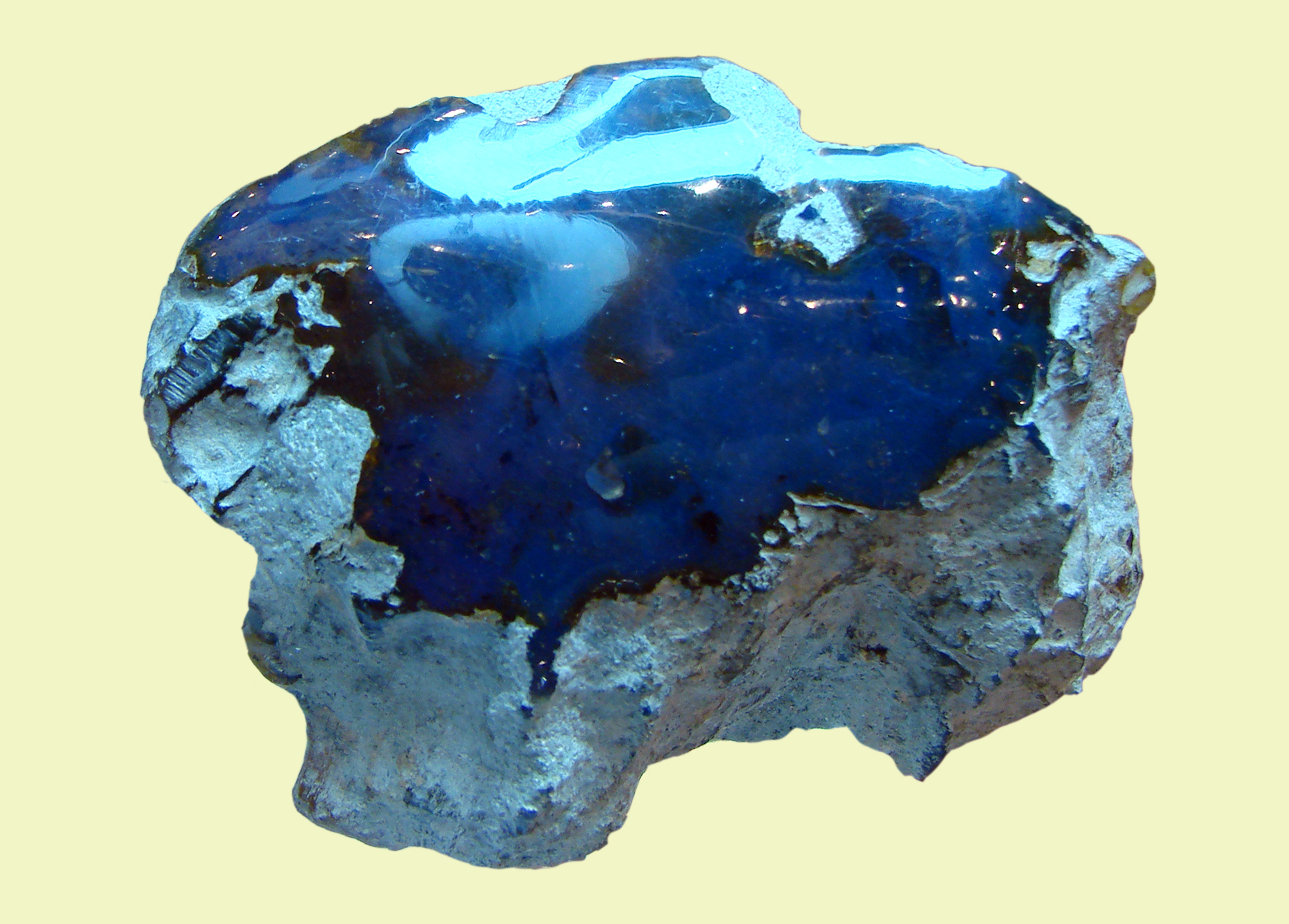Blue amber on:
[Wikipedia]
[Google]
[Amazon]
 Blue amber is a rare variety of
Blue amber is a rare variety of
 Although there are several theories about the origin of Dominican blue amber, there is a great probability that it owes its existence to ingredients such as
Although there are several theories about the origin of Dominican blue amber, there is a great probability that it owes its existence to ingredients such as
 Blue amber is a rare variety of
Blue amber is a rare variety of amber
Amber is fossilized tree resin that has been appreciated for its color and natural beauty since Neolithic times. Much valued from antiquity to the present as a gemstone, amber is made into a variety of decorative objects."Amber" (2004). In ...
resin that exhibits a blue coloration. Blue amber has been most commonly found in the Dominican Republic
The Dominican Republic ( ; es, República Dominicana, ) is a country located on the island of Hispaniola in the Greater Antilles archipelago of the Caribbean region. It occupies the eastern five-eighths of the island, which it shares with ...
—especially in the amber mines around the city of Santiago
Santiago (, ; ), also known as Santiago de Chile, is the capital and largest city of Chile as well as one of the largest cities in the Americas. It is the center of Chile's most densely populated region, the Santiago Metropolitan Region, whos ...
and, less commonly, in the eastern half of the country. In the modern age, it was discovered at about the same time as Dominican amber
Dominican amber is amber from the Dominican Republic derived from resin of the extinct tree '' Hymenaea protera''.
Dominican amber differentiates itself from Baltic amber by being nearly always transparent, and it has a higher number of fossil inc ...
.
Causes of coloration
Vittorio Bellani and Enrico Giulotto at the University of Pavia, Italy, studied several amber specimens by means of optical absorption, fluorescence spectroscopy, and time-resolved fluorescence measurements. The resulting spectral analysis revealed that the emission and excitation spectra were similar in shape to those of diluted solutions ofanthracene
Anthracene is a solid polycyclic aromatic hydrocarbon (PAH) of formula C14H10, consisting of three fused benzene rings. It is a component of coal tar. Anthracene is used in the production of the red dye alizarin and other dyes. Anthracene is col ...
, perylene, and tetracene, and suggest that the fluorescent hydrocarbon responsible for the blueness is most likely perylene.
Fluorescence is the process where molecules absorb high energy light which excites electrons into higher energy molecular orbitals. As these electrons relax back into their ground states, the energy difference is released as a photon, therefore emitting light at a higher wavelength or lower energy than the originally absorbed light.
Despite their findings, the presence of these aromatic hydrocarbons has not been confirmed in samples of blue amber. While all types of amber tested displayed a fluorescence, blue amber fluoresced with a greater intensity, even though the absorption extinction coefficient was larger for red and yellow amber.
 Although there are several theories about the origin of Dominican blue amber, there is a great probability that it owes its existence to ingredients such as
Although there are several theories about the origin of Dominican blue amber, there is a great probability that it owes its existence to ingredients such as anthracene
Anthracene is a solid polycyclic aromatic hydrocarbon (PAH) of formula C14H10, consisting of three fused benzene rings. It is a component of coal tar. Anthracene is used in the production of the red dye alizarin and other dyes. Anthracene is col ...
as a result of 'incomplete combustion' due to forest fires among the extinct species '' Hymenaea protera'' trees about 25 to 40 million years ago.
This effect is only possible in some specimens of Dominican amber
Dominican amber is amber from the Dominican Republic derived from resin of the extinct tree '' Hymenaea protera''.
Dominican amber differentiates itself from Baltic amber by being nearly always transparent, and it has a higher number of fossil inc ...
category, in some Mexican ambers from Chiapas and some ambers from Indonesia. Any other amber (such as Baltic amber) will not display this phenomenon, because its original resin is not from the '' Hymenaea protera'' tree.
Appearance
Under artificial light, the amber appears like ordinary amber, but under sunlight it has an intense fluorescent blue glow. When held against the sun it will appear like ordinary amber, and underultraviolet light
Ultraviolet (UV) is a form of electromagnetic radiation with wavelength from 10 nanometer, nm (with a corresponding frequency around 30 Hertz, PHz) to 400 nm (750 Hertz, THz), shorter than that of visible light, but longer than ...
it will glow a bright milky-blue.
Blue amber emits a very agreeable smell (aromatic molecules), which is different from regular amber when it is being cut and polished.
See also
References
{{DEFAULTSORT:Blue Amber . Mining in the Dominican Republic Natural history of the Dominican Republic